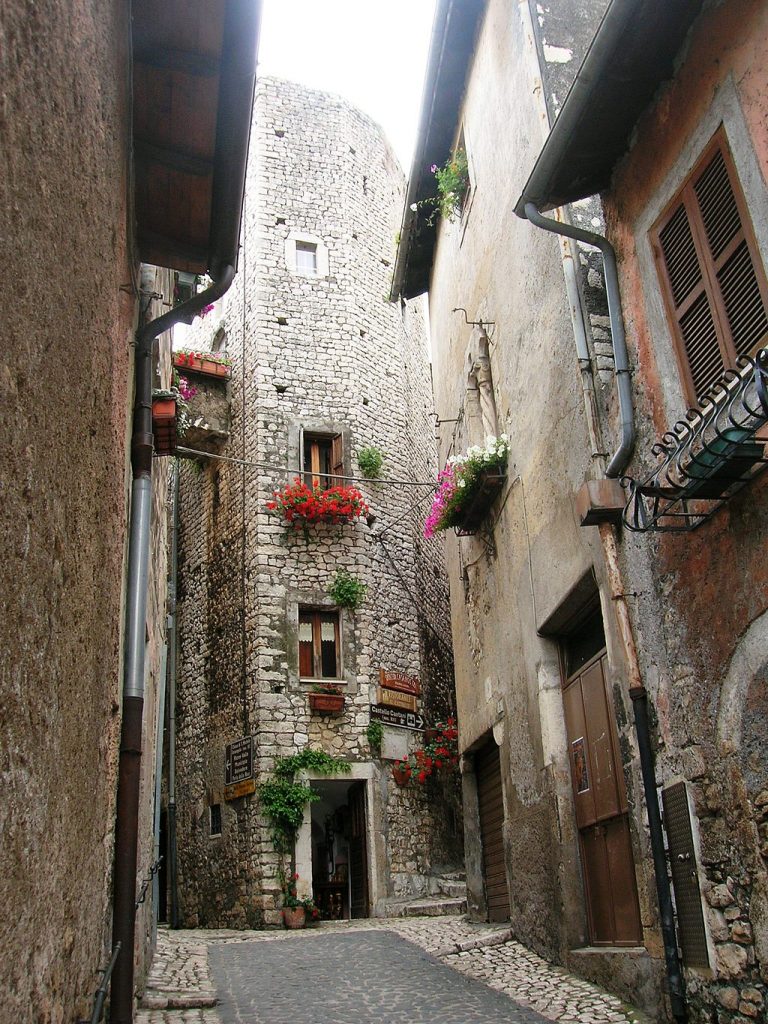Sermoneta is an enchanting place, located in the Pontine plain, a step away from the Lepini Mountains. Setting foot here means taking a trip back in time, discovering one of the most beautiful medieval villages in Italy and Lazio. The atmosphere of its historic center is unique and the reasons to try your hand at a visit are innumerable.
The Caetani Castle of Sermoneta
One of the main attractions of Sermoneta is undoubtedly the Caetani Castle. The original purpose of the ancient structure, dating back to the thirteenth century, was to be able to propose an adequate defense of the village. A stronghold symbol of the power of Caetani family, which for centuries has influenced the events of the city. Today, it is possible to admire the beauty of the castle, despite the centuries that have passed and the interventions it has undergone. Inside there are spectacular rooms decorated with splendid frescoes by Girolamo Siciolante, renamed as the Sermoneta.

The stronghold is one of the best preserved historical buildings in Lazio, intact and can be visited in its entirety. Suffice it to say that access to prisons is also allowed, characterized by wall designs made by inmates of the time. Taking on this visit also means crossing narrow and narrow paths. An element to take into consideration, in case of phobias. For some individuals, in fact, the experience could be challenging.
What to see in Sermoneta
There are many places of interest in this splendid village. Impossible not to visit theValvisciolo Abbey, a place of prayer located in the Valvisciolo Valley, in the province of Latina. A place of worship run by Cistercian monks, always linked to the presence of the Knights Templar, who used to frequent the secret rooms of the fortified church, which dates back to the eighth century.
One of the symbolic elements is the Merchant's Lodge, a complex of arches dating back to the XNUMXth century, whose construction was requested by an exponent of the Caetani family, Onorato III. The initial goal was to host the city council. However, shops, shops and stables were added to the offices. A very lively area, in the century like today. Gothic style that can only capture the gaze of visitors, with the arches that offer grandiose spectacles of light and shadow.
The churches
In the XII century the Cathedral of Santa Maria, which finds space in the homonymous square, in the heart of the historic center. Romanesque style, although the reforms over the centuries have pushed in the direction of the Gothic. Characterized by a majestic 24-meter bell tower, decorated with fine bricks and ceramics. Inside, the Gothic influence is clearly manifested. To catch the eye, however, is there Madonna of the Angels. Also worth visiting is the Chapel of the Magi.
Of great charm there Church of St. Michael the Archangel, built on top of a rocky spur. The works were carried out in the 2006th century, supplanting an ancient pagan place of worship, probably Roman. Restored in XNUMX, in order to bring to light the ancient frescoes of the underground. For centuries it has been the religious center of Sermoneta, which the Caetani family came into possession of in the XNUMXth century, establishing different congregations over the decades.

The Convent of St. Francis, located near the village. Originally erected as a structure suitable for the defense of the Templar Order. Later it was inhabited by congregations of Franciscans. The large cloister is magnificent, covered by a vaulted ceiling that boasts frescoes that trace the life of St. Francis of Assisi.
What to do in Sermoneta
Among the most intriguing guides that the village offers there is the one near the ancient one Jewish Synagogue. A historic building that can only be admired from the outside, passing through the streets of the center. Many try their hand at a visit to Sermoneta on the occasion of some festivals.
There is the Festival of Fauns, an event held in March, characterized by shows, competitions, music and local cuisine specialties, such as the zeppole di San Giuseppe, the abbacchio alla cacciatora and the cada alla vaccinara. There is also the Polenta Festival, in January, which sees this exquisite dish cooked on open wood fires for hours.
Source of the photograph: Sermoneta: Harlock 77 CC BY-SA 3.0





